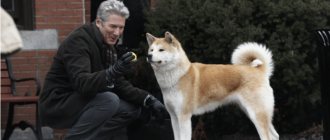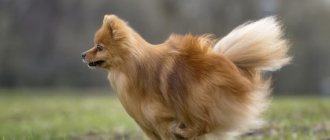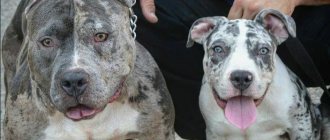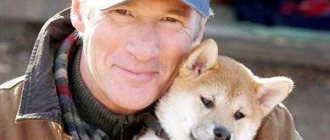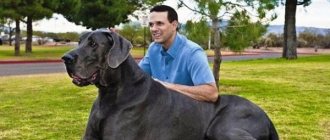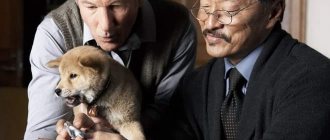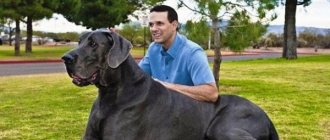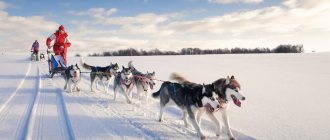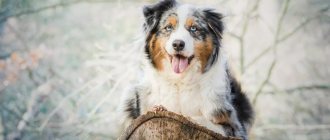Hachiko is an Akita Inu dog known to almost everyone in Japan. Her story is the most popular of all true dog stories, and has been passed down from generation to generation, as well as appearing in books, films and television dramas. Not only does it demonstrate the deep bond that can form between a human and a dog, but it also shows the essence of the Japanese dog's temperament and unwavering loyalty to its owner. Hachiko continues to touch people's hearts even today.
The events began around the early 1920s, when a certain Hidesaburo Ueno, a professor at the Imperial University (now the University of Tokyo), became the owner of an Akita Inu puppy, which he named Hachiko. The puppy grew up to be a beautiful dog, 64 cm tall and weighing 41 kg, with a sickle-shaped tail and thin light yellow hair.
Hachiko really enjoyed spending time with Ueno. When the professor went to the Shibuya train station, usually around nine o'clock in the morning, Hachiko always went with him. Then the dog returned home and at about six o’clock in the evening went to the station again to meet his owner. The sight of the two leaving for the station in the morning and returning home at night left a deep impression on many people.
However, Hachiko's happy life as Professor Ueno's pet was interrupted by a very sad event, just a year and four months later. On May 21, 1925, Professor Ueno died at work from a sudden intracerebral hemorrhage. The story goes that the night after this, Hachiko, who was in the garden, broke through the glass doors into the house and made his way into the living room where the body of the deceased was located, and spent the night lying next to the owner, refusing to budge.
After this the really sad part of the story begins. When the owner died, the dog Hachiko was sent to live with Professor Ueno's relatives in eastern Tokyo. But he ran away many times, returning to the house in Shibuya, and even after a year he still had not found his new home. The dog was adopted by Professor Ueno's former gardener, who had known him since he was a puppy. But Hachiko still ran away from this house many times. Realizing that the previous owner no longer lived in the old house in Shibuya, Hachiko walked to Shibuya Station every day and waited for the professor to return home. Every day he looked for Ueno's figure among the returning passengers, and only left when he needed to eat. He did this day after day, year after year.
Shibuya Station
Soon, people began to notice Hachiko's daily appearance at Shibuya Station. Although this dog was made famous by an article by Hirokichi Saito, published in September 1932 in the national Japanese newspaper Asahi Shimbun. The author had been interested in Hachiko for some time and sent photographs and details about him to a magazine that specialized in Japanese dogs. Hachiko's photograph also appeared in dog encyclopedias abroad. Thanks to the spread of information, almost everyone in Japan learned about Hachiko and he became a celebrity. He was invited several times to Nippo shows, and his image was used to make figurines and pictures.
On April 21, 1934, a bronze statue of Hachiko by sculptor Tern Ando was installed in front of the ticket gate of Shibuya Station. The opening ceremony was a grand event, attended by Professor Ueno's grandson and crowds of people. Unfortunately, this first statue was melted down to make weapons during World War II in 1944. However, in 1948, a replica of the monument was made by Takeshi Ando. This monument can still be found today at Shibuya Station. Hachiko's unexpected fame did not change his life at all; it continued just as sadly as before. Every day he went to the station and waited for Professor Ueno to return.
Photo of Hachiko a year before her death
In 1929, Hachiko suffered from scabies, which nearly killed him. Being on the streets for so many years had left him thin and he was constantly fighting with other dogs. One of his ears no longer stood straight up, and he seemed completely miserable, not like the proud, strong animal he had once been. He could be mistaken for a simple, old mongrel.
Posthumous photo of Hachiko, March 8, 1935
As Hachiko grew old, he became very weak and suffered from heartworms. Finally, on March 8, 1935, at the age of eleven, he took to the streets of Shibuya for the last time. The total period of time that the dog waited for his owner was nine years and ten months. Hachiko's death was reported in major Japanese newspapers, and many people were heartbroken by the sad news. His bones were buried next to Professor Ueno. He was finally reunited with the person he had been waiting for so long.
Monument to Hachiko and Professor Ueno
The story of Hachiko is etched in the hearts of the Japanese, and it is certainly the most touching story about the strong bond between a dog and his owner, as well as the boundless loyalty that an Akita Inu is capable of.
Film adaptations
The first film about an animal who believed until the end of his days that his beloved owner would return to him was released in 1987. It was directed by Seijiro Koyama. The film was a success in Asia, but the story about Hachiko received worldwide recognition after the release of the remake. The action of the second film is moved to America. His hero was Professor Peter Wilson, played by actor Richard Gere.
Actor Richard Gere
A professor living in the suburbs found a small Akita Inu puppy at the railway station. The dog was sent from Japan to the USA and was lost along the way. The note that came with the animal stated that its name was Hachiko.
The station employees did not want to shelter the baby, and the professor took him into his house until the real owner appeared. The man's family was not happy about the animal's appearance, but over time they got used to the dog, seeing how much happiness it brought Wilson.
Like the prototype from the original story, Hachiko accompanied the savior to the station every day when he left for work in the city. When a tragic incident occurred and the professor did not arrive, his family took Hachiko from the station. The dog returned to his usual place day after day, and the professor’s relatives did not prevent him from leaving, and the station employees did not drive him away.
Professor Peter Wilson and Hachiko
9 years later, Hachiko passed away. Before his death, he dreamed of his owner returning home, and this scene turned out to be the most powerful and touching in the film.
The film starred three Akita Inu puppies and three adult dogs, portraying the four-legged hero. In 1989, the film “Tethered at the Runway” was released in the Soviet Union, the plot of which was reminiscent of Hachiko’s biography. A book could be written on it, but so far no author has taken on such a project.
Hachiko came there every day at the same time his owner returned from work
Naturally, the passengers quickly noticed Hachiko. Many of them saw how the faithful furry friend and his owner Hidesaburo were walking home from the indicated station. Not everyone was friendly towards the dog, at least until October 4, 1932, when the first article about Hachiko was published - after which the dog attracted widespread attention, and people often brought him food and treats.
In 1932, the first article about the faithful pet was published in a national newspaper.
The article was written by one of Hidesaburo Ueno's former students. The student was writing a dissertation on the Akita dog breed, and after seeing one at the station, he followed Hachiko home to Kuzaboro Kobayashi, the late professor's former gardener. The student learned Hachiko's life story from Kuzaboro and shortly thereafter published a documentary census of Akitas in Japan. According to research, there are only 30 purebred Akitas left in Japan, one of which was Hachiko from Shibuya Station.
Akita Inu: breed standard
For all its plushness, the Akita Inu is a fairly large dog. She will grow up to 50 kg and 70 cm at the withers, with a charming red, brindle or white coloration. American Akitas are allowed a black mask, but Japanese Akitas are not.
The hard and straight coat seems to consist of three layers. It is its structure that determines the charming appearance of the dog. There is a subspecies of long-haired Akita Inu that can unexpectedly appear even in the litter of “standard” parents. This is a genetic trait.
The dog has harmonious and correct proportions, a strong build and a moderately long muzzle without sharp features. It has a large black nose and small eyes with slightly raised corners. The dense triangular ears are erect and close set.
The Akita Inu has a muscular neck, a developed chest and the same lower back. The tall, thick tail is curled into a ring, and the paws are thick and rounded. The Akita moves very smoothly and softly, but the gait is strong and confident.
Photo: zverushki.media
Pit bull (American pit bull terrier): description of the breed, character and care
Features of care
Combing
The Akita Inu's coat does not cause any particular inconvenience; brushing with a furminator once or twice a week is enough.
Only during heavy shedding, which happens a couple of times a year, should you approach hair care more carefully and do it every day.
To do this, you need to have at least two brushes - for wool and for thick undercoat.
The noble white fur on the belly and the golden tint on the back give Hachiko a special charm.
Dogs of this breed should be bathed once or twice a year; more frequent water procedures can damage the coat.
Once every two weeks you should trim your dog’s nails, and once every few days you should brush its teeth with a special paste.
If your dog has pus in his eyes, we recommend reading this article
Walk
The Akita Inu is a very characterful dog, so you don’t need to “walk” it, but “walk” with it.
In most cases, she decides where to go and often prefers to walk without a harness .
At least once a week, she should be released without him and given the opportunity to run around to her heart’s content without the owner’s participation in this.
These dogs love to spend time in clean air, so they require frequent walks and outdoor games.
The dog needs frequent and high-quality physical activity, so at least two hour-long walks a day are necessary.
If you are short of time, you can shorten one walk and make up for the lack of activity on the weekend by staying outside for several hours in a row.
The same type of games and walks gets boring for the dog; it is better to alternate both places for walks and equipment for games, constantly choosing something new.
This article will tell you about the best toys for dogs.
Active training and agility are ideal for such a pet .
Feeding
In their historical homeland, the Akita Inu was fed rice, fish and some other seafood, seaweed and a lot of vegetables.
They digest boiled eggs and wild meat (for example, venison) well.
Purebred dogs are adapted to just such foods; they can have very serious allergies .
This breed also does not tolerate corn and oatmeal.
Akita Inu can be described in just a couple of words - “innate valor”
Ready-made food should be selected without soy, with a single source of protein (for example, fish or duck) and a maximum protein content of 26%.
There should be no wheat or corn in the composition; it is better to prefer rice or potatoes as a source of carbohydrates.
For puppies, it is worth constantly having cottage cheese, boiled sea fish, a small amount of veal and vegetables.
Puppies are fed 3-4 times a day until they are five months old, after which three times a day until they are 9 months old, after which an adult dog can be switched to two meals a day.
It is imperative to feed puppies with vitamins, preferably made from algae.
One portion is approximately 10% of the puppy’s weight; if he cannot cope with this amount of food at a time, it is better to reduce it slightly.
The Akita Inu is a very gentle and friendly breed that gets along well with other pets.
Hachiko became a national treasure
In 1934, the devoted Akita Hachiko was immortalized in the form of a bronze statue created by the famous Japanese artist Teru Ando. Unfortunately, during World War II, the bronze statue was taken for scrap for military needs. However, in 1948, thanks to the efforts of the sculptor's son, a second statue of the faithful Akita appeared, which still stands today.
General description of the breed
Akita Inu is difficult to classify into any specific category. At different times they were bear hunters, nannies, companions, guard dogs and decorative dogs. This is the largest Spitz breed and one of six on the list of native Japanese breeds protected by the local canine organization. The lifespan of an Akita is from 10 to 14 years.
Photo: klkfavorit.ru
Interesting Facts
- Akita Inu dogs have always been in demand in Japan, but after the release of the film about Hachiko, a real boom in these animals began. The first mention of the breed appeared in 1600. Scientists confirm that such dogs were the guards of kings and were often taken hunting.
Akita Inu dog
- This breed appeared in America by accident. A certain Helen Keller brought a puppy back from a trip to Japan. In the land of the rising sun, she learned about the touching story of a little faithful friend and got a puppy, who turned out to be a pioneer in the United States. The pet brought a lot of joy to the owner, but soon died of distemper. The Japanese government, having learned about what had happened, gave Keller the brother of the deceased dog.
- After World War II, American soldiers stationed in Asia returned home with Akita Inu puppies. Since 1956, this breed has actively spread to the United States, and the American Akita with stronger immunity was bred.
American Akita
- There has been heated debate among dog breeders for a long time about the varieties of Akita Inu, but in 1972 the American breed was officially accepted into the US Kennel Club. A distinctive feature of these animals was loyalty and courage. Once upon a time, they were looking for a helper for an orphaned tiger cub in an American zoo and chose an Akita puppy.
- Akita dogs are distinguished by their kindness, commitment to family, love of children, loyalty and fearlessness. These are true friends and life partners. Therefore, there are many art photos and memes on the Internet praising this breed.
People came to Shibuya Station to pet Hachiko and bring him treats
The story goes that a former student of his master visited Hachiko often and over the years published several articles about the dog and his devotion. Hachiko soon became a national sensation. The Japanese were deeply impressed and touched by the dog's love and devotion. Throughout the country, Hachiko became a shining example of the loyalty that parents teach their children.
Health
Characteristic diseases
Akita Inu often exhibits diseases associated with its nature, body characteristics and size:
- dysplasia of the hip or even elbow joint;
- hypothyroidism and the development of skin diseases;
- birth defects and vision problems;
- immune blood diseases;
- a large number of allergic reactions to products;
- volvulus of the stomach.
The Akita Inu is an intelligent and calm dog, but at the same time independent and strong-willed.
Vaccinations
The first vaccination is given to puppies at the age of 6 weeks, the second at 8.5-9 weeks.
The last, third vaccination is done three weeks after the second if the puppy is completely healthy.
You can only walk with him a couple of weeks after the last vaccination.
Then the adult Akita Inu is vaccinated once a year. Two weeks before vaccination, the dog must be given anti-worm medications, and it must use them two to three more times a year.
In addition, treatment for skin parasites is necessary once a year.
Akita Inus make people feel relaxed and calm, so they help people cope with stress.
How the film "Hachiko" was filmed
Hachiko is an American adaptation of a Japanese story about a very loyal dog who accompanies his owner to the train station every morning and returns every day to meet him.
- Starring: Richard Gere and Joan Allen
- Director: Lasse Hallstrom
- Producers: Richard Gere, Bill Johnson
- Writers: Stephen P. Lindsay, Kaneto Shindo
- Release date: Tuesday, March 9, 2010
Filming dogs of the Hachiko breed in the film “Hachiko’s True Friend”
General precautions were taken in all scenes. All streets were blocked during filming. All guardrails have been checked to ensure there are no sharp edges. For the scene where the dog is seen in the barn, the area was searched for debris and dog areas were set up for comfort. The shed was kept at a comfortable temperature - the heat was turned on when necessary.
For the train station scenes, the trains were stationary while the animal was on set; the only time the animals were allowed to walk near moving trains was when the actors were holding them.
For scenes in which Hachiko ("Hachi") walks along train tracks, off-camera dog handlers walked alongside the dog and performed gentle walking. The dog's path was cleared of debris in advance. For scenes that included a barbecue grill, the dogs were kept at a safe distance.
Most rehearsals used a stuffed dog. Two Shiba Inu puppies alternated in Hachi's role as a puppy. Three Akita Inus alternated in Hachiko's role as an adult dog.
For scenes in which the dog performs simple actions such as sitting, walking on stairs or near actors, standing or walking from one point to another, the handlers had the dog follow the trail while they were off camera, using a variety of signals and verbal commands. to call an action.
Well-trained dogs are accustomed to these actions. For scenes in which a puppy or dog licks a person or object, baby food was used to entice the dog to lick. All products used were considered safe for canine consumption and their use was limited to avoid overfeeding.
The falling snow and freezing rain seen in the film were added in post-production. The snow observed on the ground was natural. The breed of long-haired dog used for the film is adapted to this weather; however, as an additional measure of comfort, the dogs were kept warm and rested after such scenes.
Puppy filming
For scenes in which Hachi is seen wearing the backpack, the leather backpack was lined with a blanket and the trainers placed the well-rehearsed puppy inside with its head poking out. For the scene in which Parker (Richard Gere) removes the puppy from a partially closed backpack, the puppy was only inside it for a short time, and there were many holes for good air circulation.
For the scene in which Parker holds the puppy under his arm outdoors, the puppy was first wrapped in a blanket and then tucked under the actor's coat for even more warmth.
For the scene in which Hachiko passes through a train station in transit, the puppy was placed in a bamboo pet carrier that had a blanket inside for cushioning.
The carrier was attached to a pile of suitcases with luggage straps tied to a holder and attached to both the bottom suitcase and the luggage carrier basket. The dog trainers rehearsed the scene at a slow pace to get the puppy actor accustomed to the action, and once the dog trainers realized that the puppy was accustomed to the movement, the cart-pulling actor was instructed to increase the speed slightly.
The fall of the carrier to the ground was filmed separately. The carrier did not fall to the ground, it fell on specially placed soft bedding. In this case, the carrier was dropped from two centimeters above the ground. Once the carrier was on the ground, the dog was forced to exit through a door that was specially made to open easily.
For the scene in which the puppy first appeared on the platform, the handlers used a track-to-track technique and used various verbal cues to get him to stay.
The trains did not move while the puppy was on the platform. Silence was declared at the station so as not to frighten the little puppy.
